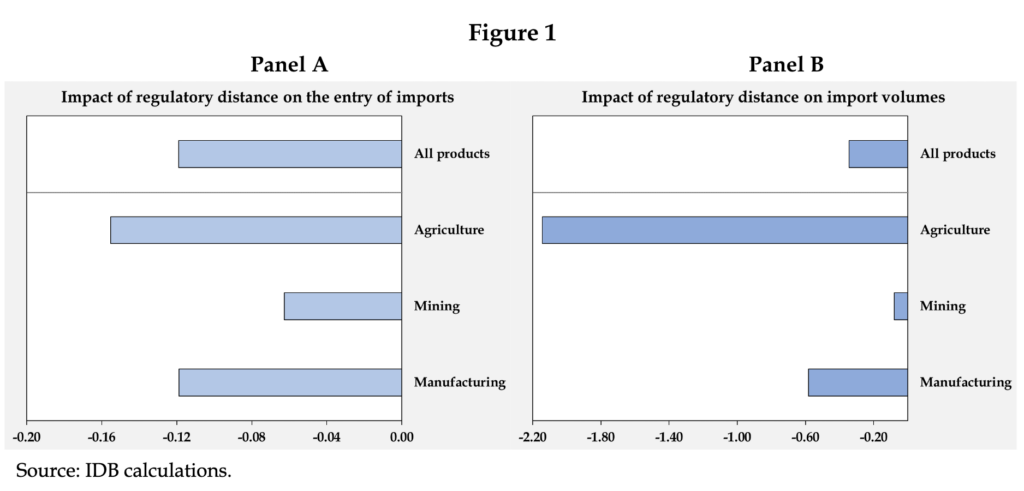As tariffs continue to decrease worldwide, technical measures like sanitary and phytosanitary measures (SPS) and technical barriers to trade (TBT) have become relatively more important as potential obstacles to international trade.
The literature has focused particularly on the potential obstacles arising from differences in national regulations, a situation known as “regulatory heterogeneity.” The idea is that when regulations in the destination market differ significantly from those in the exporting country, firms wishing to export to the destination market face additional costs to identify, comply with, and demonstrate compliance with such regulations. The need to produce different versions of a good to comply with disparate regulations in each destination market limits exporting firms’ ability to take advantage of economies of scale, making the product even more expensive.
The Inter-American Development Bank (IDB) publication “Barriers or Enablers? Towards Trade-Compatible Technical Measures in Latin America and the Caribbean” found high levels of regulatory heterogeneity in Latin America and the Caribbean (LAC). Using a regulatory distance index—the percentage of technical measures that differ between two countries for each good—the calculations show that the average regulatory distance between LAC countries is 58%. In other words, on average, 58% of the technical measures in place between each pair of countries in the region are different. In contrast, the regulatory distance index between European Union (EU) countries is zero, as the bloc has achieved regulatory convergence by combining different trade regimes.1
Regulatory heterogeneity has a negative impact on international trade. Figure 1 (panel A) shows econometric estimates of the probability of observing international trade between countries—the extensive margin, in technical terms. The nature of technical measures makes it important to examine this margin. Unlike tariffs, technical measures may involve both variable costs and fixed costs that may be high enough to impede trade. Moreover, even if exporting firms comply with all the requirements associated with technical measures in a foreign market, access to that market may not be automatic, as it may take several years for the exporter to obtain certification. Therefore, it is useful to examine the impact of regulatory distance on the likelihood that two countries trade a good.
The first bar in panel A shows that a mere 10% increase in the regulatory distance between two LAC countries reduces the probability of trade flows between them by 25%.2 The negative effect on trade in the agricultural sector is even larger (second bar), suggesting that regulatory differences between countries pose a significant challenge to using international trade as a tool to promote food security.

Figure 1 (panel B) shows the effect of regulatory distance on import volumes—the intensive margin, in technical terms. This effect is also negative. The first bar shows that a 10% increase in regulatory distance is associated with a reduction in import volumes of about 3.5%. This effect is also significant. For example, reducing the average regulatory distance in LAC from 58% to 25% is associated with a 19% increase in the region’s average bilateral trade volume.
According to a survey of LAC exporting companies that formed part of the study, 45% of respondents said they found it difficult to identify the relevant regulations in their destination markets. Likewise, 40% admitted that their annual costs for compliance with technical measures represent more than 20% of their total sales. Some 43% of the companies surveyed said that regulatory heterogeneity generates high costs due to significant changes in production, testing, or both to meet the demands of each target market, and this percentage increases to 50% for small companies. These results support the econometric findings and suggest that reducing regulatory heterogeneity could cut the costs of dealing with technical measures when supplying multiple markets, which would be particularly useful for small exporting firms.
Regulations are not inherently harmful—indeed, they serve legitimate national objectives. The key is to avoid creating unnecessary barriers to trade. As part of a modern trade and integration agenda, technical measures should be designed to meet national objectives in a way that does not undermine international trade and potentially even promote it. Participation in international regulatory cooperation mechanisms can significantly promote international trade. Exporting companies in LAC would be the first to benefit from such changes and would undoubtedly appreciate them.


